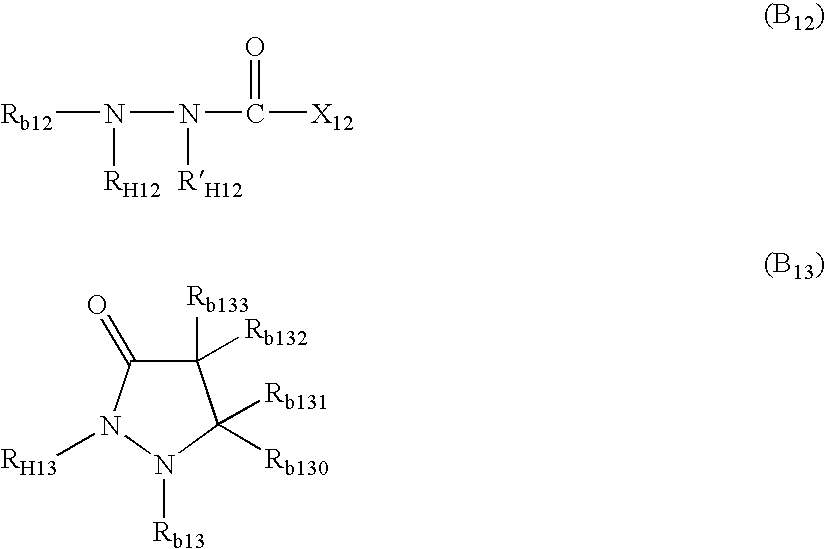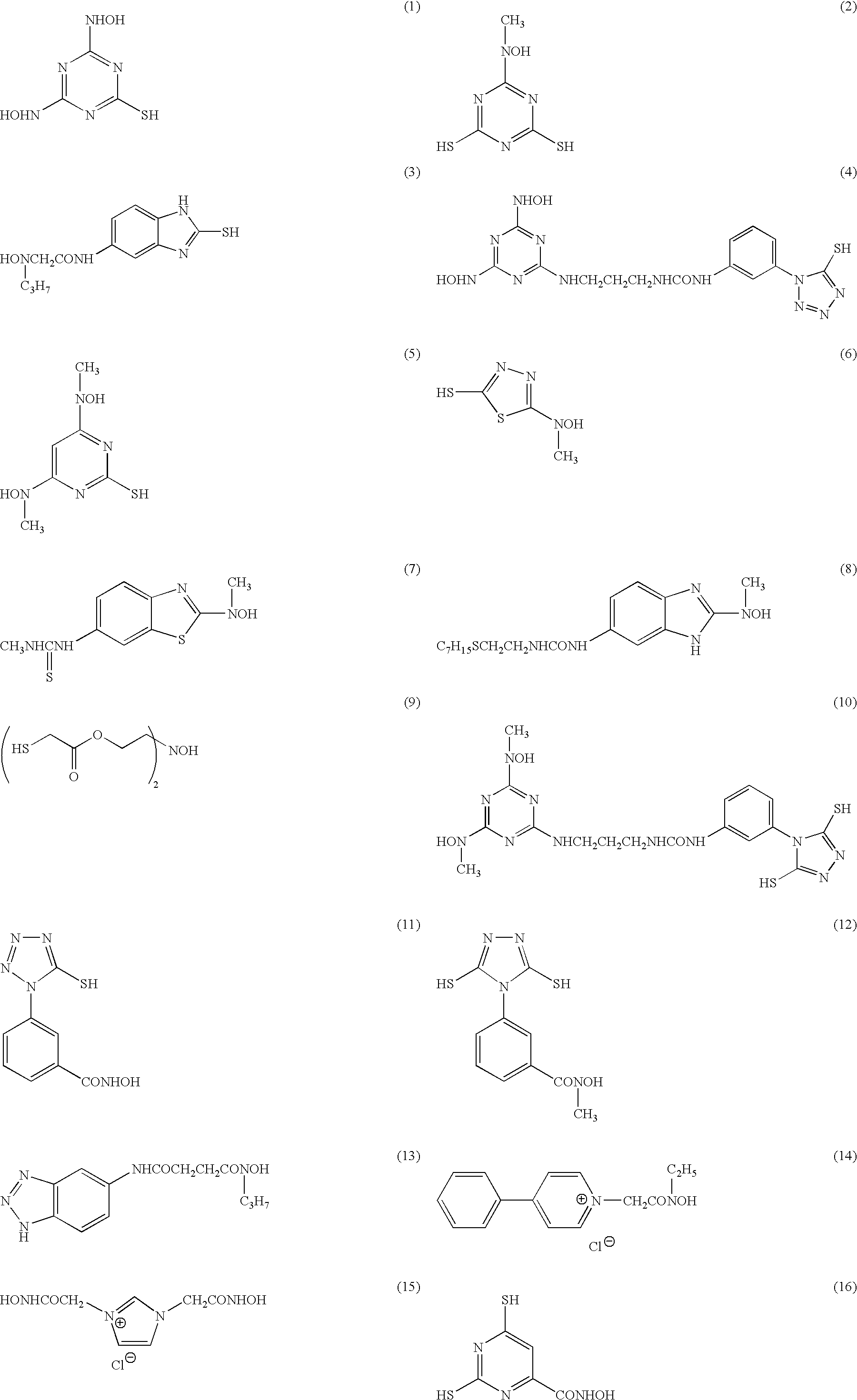Photothermographic material
a technology of photothermographic materials and applied in the field of photothermographic materials, can solve the problems of reducing sensitivity, reducing the sensitivity of digital imaging recording materials, and insufficient image quality of medical images in digital imaging recording materials obtained by such a general image forming system
- Summary
- Abstract
- Description
- Claims
- Application Information
AI Technical Summary
Benefits of technology
Problems solved by technology
Method used
Image
Examples
example 1
1. Preparation of PET Support
[0439] Both surfaces of the PET film which was colored blue at the density 0.17 and had a thickness of 175 μm were treated to corona discharge treatment of 8 W / m2·min.
2. Coating of Back layer
[0440] In 830 g of MEK, 84.2 g of cellulose acetate butyrate (CAB381-20, produced by Eastman Chemical Co.) and 4.5 g of polyester resin (Vitel PE2200B, produced by Bostic Co.) were added and dissolved while stirring was carried out. To the solution, 43.2 g of methanol having dissolved therein 4.5 g of a fluorocarbon surfactant (Surflon KH40, product by Asahi Glass Co., Ltd.) and 2.3 g of another fluorocarbon surfactant (Megafac F120K, product by Dainippon Ink & Chemicals Inc.) was added. The resulting solution was thoroughly stirred until these were dissolved. Finally, 75 g of silica (Siloid 64X6000, product by W.R. Grace Co.) dispersed in methyl ethyl ketone to a concentration of 1% by weight using a dissolver-type homogenizer was added and the mixture was stir...
example 2
1. Preparation of PET Support, and Undercoating
1-1. Film Manufacturing
[0488] PET having IV (intrinsic viscosity) of 0.66 (measured in phenol / tetrachloroethane=6 / 4 (weight ratio) at 25° C.) was obtained according to a conventional manner using terephthalic acid and ethylene glycol. The product was pelletized, dried at 130° C. for 4 hours, melted at 300° C., and the dye BB having the following structure was included at 0.04% by weight. Thereafter, the mixture was extruded from a T-die and rapidly cooled to form a non-tentered film having such a thickness that the thickness should become 175 μm after tentered and thermal fixation.
[0489] The film was stretched along the longitudinal direction by 3.3 times using rollers of different peripheral speeds, and then stretched along the transverse direction by 4.5 times using a tenter machine. The temperatures used for these operations were 110° C. and 130° C., respectively. Then, the film was subjected to thermal fixation at 240° C. for ...
example 3
[0546] 1) Preparation of Photosensitive Silver Halide Emulsion-17
[0547] In 900 mL of water, 7.5 g of ossein gelatin having an average molecular weight of 100,000 and 10 mg of potassium bromide were dissolved. The resulting solution was adjusted to a temperature of 35° C. and a pH of 3.0 and thereto, 370 mL of an aqueous solution containing 74 g of silver nitrate and 370 mL of an aqueous solution containing potassium bromide and potassium iodide at a molar ratio of 98 / 2 and containing iridium chloride in an amount of 1×10−4 mol per one mol of silver were added by a controlled double jet method over 10 minutes while keeping the pAg at 7.7. Thereafter, 0.3 g of 4-hydroxy-6-methyl-1,3,3a,7-tetrazaindene was added and the pH was adjusted to 5 with sodium hydroxide to obtain a cubic silver iodobromide grain having an average grain size of 0.06 μm, a standard deviation in the grain size of 12% and a (100) face percentage of 87%. This emulsion was desalted by adding a gelatin coagulant and...
PUM
 Login to View More
Login to View More Abstract
Description
Claims
Application Information
 Login to View More
Login to View More - R&D
- Intellectual Property
- Life Sciences
- Materials
- Tech Scout
- Unparalleled Data Quality
- Higher Quality Content
- 60% Fewer Hallucinations
Browse by: Latest US Patents, China's latest patents, Technical Efficacy Thesaurus, Application Domain, Technology Topic, Popular Technical Reports.
© 2025 PatSnap. All rights reserved.Legal|Privacy policy|Modern Slavery Act Transparency Statement|Sitemap|About US| Contact US: help@patsnap.com



